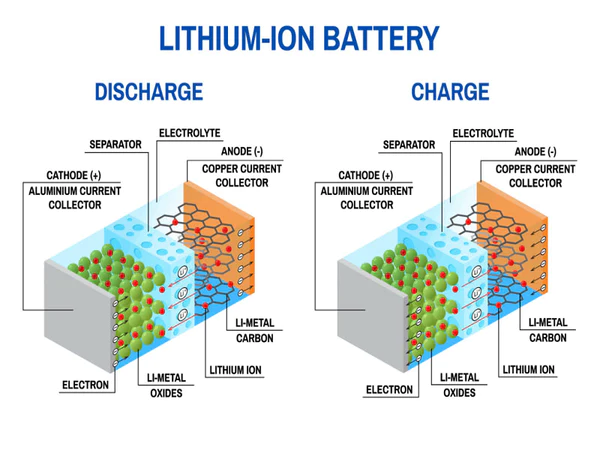The future of large-scale battery energy storage looks highly promising and dynamic, with several trends shaping its trajectory and market forecasts indicating substantial growth. As the demand for renewable energy and more resilient grid systems increases globally, Battery energy storage is poised to play a critical role. Let’s explore the key trends and market forecasts in this area.

Emerging Trends in Large-Scale Battery Energy Storage
- Increasing Capacity and Efficiency: Advancements in battery technology are leading to higher energy densities and efficiencies, enabling larger-scale storage solutions.
- Declining Costs: The cost of battery storage is expected to continue declining due to technological improvements, increased manufacturing scale, and more efficient supply chains.
- Solid-State Batteries: Research and development in solid-state battery technology could lead to safer and more efficient storage options, potentially revolutionizing the market.
- Integration with Renewable Energy: As renewable energy sources like solar and wind become more prevalent, the need for large-scale battery energy storage to mitigate their intermittency will grow.
- Grid Stabilization and Energy Management: Battery energy storage will increasingly be used for grid services like peak shaving, load leveling, and frequency regulation.
- Green Hydrogen and Alternative Technologies: The exploration of green hydrogen and other storage technologies as complements or alternatives to battery storage in certain applications.
- Regulatory and Policy Support: Government policies and incentives are likely to continue supporting the deployment and integration of battery energy storage.
- Innovative Business Models: New business models around energy storage, including as-a-service offerings and virtual power plants, are emerging.
- Decentralization of Power Systems: The rise of microgrids and distributed energy resources will likely increase the demand for localized energy storage solutions.
- Improved Battery Recycling and Sustainability: A growing focus on the sustainability of batteries, including more efficient recycling methods and lifecycle management.
Market Forecasts
- Substantial Market Growth: Various market research reports predict a significant increase in the global energy storage market over the next decade, driven by decreasing costs and increasing applications.
- Expansion in Various Sectors: Growth is expected not just in utility-scale storage but also in commercial, industrial, and residential sectors.
- Regional Variances: Market growth will vary by region, with particular expansion expected in areas with high renewable penetration or grid stability issues.
- Investment Surge: Increased investments from both public and private sectors in energy storage technologies are anticipated.
- Technology Diversification: The market might see a diversification in the types of storage technologies used, with lithium-ion batteries leading but other technologies also gaining ground.
Challenges and Considerations
- Supply Chain and Material Availability: The availability and ethical sourcing of raw materials for batteries remain a concern.
- Regulatory and Market Frameworks: The development of supportive regulatory and market frameworks is crucial to facilitate growth.
- Technological Evolution: Rapid technological changes pose a challenge in terms of investment risks and decision-making.
- Integration and Standardization: Effective integration into existing grid infrastructure and standardization of technologies and practices are vital.
Conclusion
The future of large-scale battery energy storage is marked by rapid growth, driven by technological advancements, declining costs, and increasing demand for renewable energy integration and grid stability. Despite challenges, the outlook is overwhelmingly positive, with vast potential for innovation and market expansion. This growth will play a crucial role in the global transition to more sustainable and resilient energy systems.
